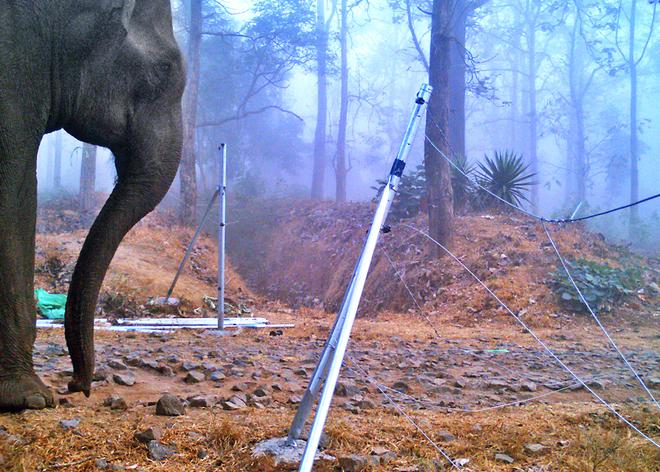The story so far: In another instance of human-wildlife conflict in Kerala, sixty-year-old Sivaraman was trampled to death by a wild elephant in Dhoni, Palakkad, while on a morning walk on July 8. Villagers blamed Forest officials for failure to issue warning about the presence of the elephant. However, widespread protests were called off after officials agreed to tranquilise the animal and intensify patrolling.
This is the latest in a series of such incidents over the years, and has put the spotlight back on Kerala’s escalating human-wildlife conflict. It is also occurring in the backdrop of heated debates and protests going on in the State regarding a June 3 directive of the Supreme Court to set up buffer zones or eco-sensitive zones (ESZ) of 1 km around wildlife sanctuaries and national parks.
Why is human-wildlife conflict a controversial issue in Kerala?

Forest covers nearly 30% of the State’s geographical area. For a relatively small State with an average width of just around 70 km and a population of more than 3.46 crore, this means numerous densely populated human settlements are located close to protected forest regions. Moreover, a large number of agricultural plantations too lie near wildlife habitats. This is especially true in the case of hilly reaches, which includes most of the heavily forested eastern part of the State. Although this situation makes human-animal conflict inevitable, in recent years, Kerala has seen a sharp increase in the number of such incidents with those living near forest fringes suffering crores of rupees worth of damage to livelihood, mostly due to frequent raids by elephants and wild boars. Over 600 people have lost their lives in Kerala since 2015 in conflict with animals. This has led to a number of protests by affected villagers with some of them even leading to open confrontation between the protesters and the State Forest department officials.
What is the scale of human-animal conflict in the state?
As per the State Forest department’s own study, Kerala witnessed human-wildlife conflict across 1,004 areas. The study recorded over 48,000 incidents of damage to major crops between 2013-14 and 2018-19. Among the 35 forest and wildlife divisions in the State, Nilambur north (94), Wayanad south (92) and Wayanad north (70) forest ranges had the highest numbers of major conflict locations. Wild elephants were involved in the highest number incidents in the State. Pachyderms were responsible for 14,611 incidents recorded between 2013-14 and 2018-19. Wild boars (5,518), bonnet macaques (4,405) and snakes (2,531) are the others in this category. Elephants, bonnet macaques and wild boars have caused the most damage to farmers residing in forest fringe areas. Herbivores such as sambar, spotted deer and gaur too have contributed significantly to crop damage.
A total of 814 livestock animals, including cattle, buffalo and goat, also have been reported to have been killed or suffered injuries in such attacks, and Tigers have preyed on 420 of these.
What are the reasons for the increase in human-wildlife conflict?
Experts cite increased area under cultivation around wildlife habitats, changing cropping pattern, significant increase in the population of animals like elephants and tigers due to conservation efforts, and movement of livestock and humans in wildlife habitats during odd hours as the main reasons for the rise in human-wildlife conflict incidents. There has also been a substantial increase in the population of prolific breeders like wild boars and peacocks.
However, increased number of incidents involving elephants are due to habitat depletion and fragmentation caused by human activities. Moreover, invasive alien species have reduced the availability of food and water. Monoculture of species such as eucalypts and acacia has also adversely affected plant biodiversity.
Also read: Invasive species threatens wildlife habitats of Western Ghats
What are the proposed solutions and why they are not effective?

Elephant-proof trenches and solar power fences are widely used in Kerala, and they are considered largely effective, provided they are properly maintained. However, there are several regions where these mechanisms have not been installed. These fences are also often broken by people living nearby to let their cattle into the forests for grazing, and elephants too destroy the fences using their legs and tusks. In a ₹620-crore masterplan to address the issue, the Forest department recommends hanging power fences that will be out of reach of elephants. Moreover, as part of the State government’s new eco-restoration policy, the Forest department is aiming to plant suitable indigenous plants (wild mango, wild gooseberry, and wild jackfruit) in the forest to ensure wild animals’ food security and dissuade them from entering agricultural lands. Such measures need to be supplemented by creating early warning systems that can track the movement of elephants and other dangerous animals using drones and watchers, so that people can avoid going to locations where they have been spotted. However, warning mechanisms are not widely installed in Kerala.
However, the above measures are not effective against wild boars. Although the Centre is yet to accept Kerala’s request to declare wild boars as vermin, the State government recently empowered local bodies to cull wild boars that pose a threat to agriculture crops or human life. The other options include capturing and neutering the boars, or relocating them to forests where there are predators like tigers and leopards.
Also read: Kerala demands power to declare wild animals as vermin
How is human-animal conflict connected to the ESZ norm?
Although ESZ norm has caused a storm in Kerala with the legislative assembly unanimously passing a resolution on July 7 urging the Centre to exempt the State from it, setting up an ESZ has been suggested by conservationists, retired Forest department officials and scientists as a way to reduce human-wildlife conflicts. However, in a State that is densely populated with severe land scarcity and a significant number of people living close to wildlife habitats, this would be difficult to implement.
(Written with inputs from Sarath Babu George, S. Anandan and Dhinesh Kallungal)







